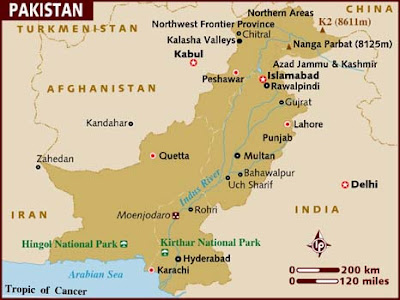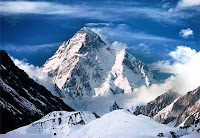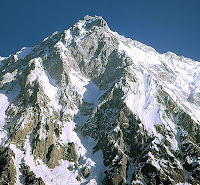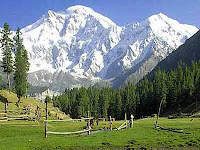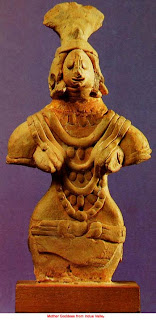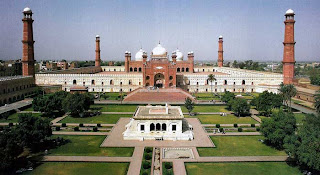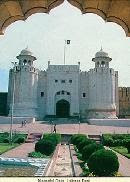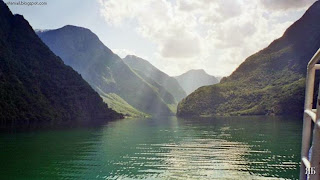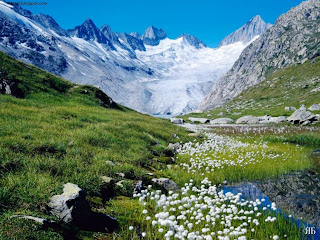From the mighty stretches of the Karakorams in the North to the vast alluvial delta of the Indus River in the South, Pakistan remains a land of high adventure and nature. Trekking, mountaineering, white water rafting, wild boar hunting, mountain and desert jeep safaris, camel and yak safaris, trout fishing and bird watching, are a few activities, which entice the adventure and nature lovers to Pakistan.
Pakistan is endowed with a rich and varied flora and fauna. High Himalayas, Karakoram and the Hindukush ranges with their alpine meadows and permanent snow line, coniferous forests down the sub-mountain scrub, the vast Indus plain merging into the great desert, the coast line and wetlands, all offer a remarkably rich variety of vegetation and associated wildlife including avifauna, both endemic and migratory. Ten of 18 mammalian orders are represented in Pakistan with species ranging from the world's smallest surviving mammals, the Mediterranean Pigmy Shrew, to the largest mammal ever known; the blue whale.
Diverse culture and ancient civilizations
Situated in the heart of the South Asian sub-continent, it is a country with its own fascinating history and cultural heritage. Pakistan was the site for one of the world's earliest human settlements, the great prehistoric Indus Valley Civilization, the crucible of ancient empires, religions and cultures. Pakistan traces its history back to 2,500 years B.C. when a highly developed civilization flourished in the Indus Valley. Excavations at Harappa, Moenjodaro, Kot Diji and Mehr Garh have brought to light, the evidence of an advanced civilization existing even in more ancient times.





Landscape, location and geography
The landscape of Pakistan ranges from lofty mountains in the north, the Karakoram and the Himalayas, through dissected plateaus to the rich alluvial plains of the Punjab. Then follows desolate barrenness of Balochistan and the hot dry deserts of Sindh blending into miles and miles of golden beaches of Mekran coast.
Pakistan is situated between latitude 24 and 37 degrees North and longitude 62 and 75 degrees East. The country borders Iran on the West, India on the East, Afghanistan in the North-West, China in the North and the Arabian Sea in the South. The great mountain ranges of the Himalayas, the Karakoram and the Hindukush form Pakistan's northern highlands of North West Frontier Province and the Northern Area; Punjab province is a flat, alluvial plain with five major rivers dominating the upper region eventually joining the Indus River flowing south to the Arabian Sea; Sindh is bounded on the east by the Thar Desert and the Rann of Kutch and on the west by the Kirthar range; the Balochistan Plateau is an arid tableland, encircled by dry mountains. Its total area is 803,940 Sq.Km and total land area is 778,720 Sq.Km. (including FATA and FANA).
Unique mountains, valleys and glaciers
Northern areas of Pakistan, spread over 72,496 sq.Km. are fascinating as its southern region. Amidst towering snow-clad peaks with heights varying from 1000 m to over 8000 meter, the valleys of Gilgit, Hunza and Skardu recall Shangri-La. The cultural patterns in this region are as interesting as its topography. The people with typical costumes, folk dances, music and sports like polo and buzkashi provide the traveler an unforgettable experience. Nowhere in the world there is such a great concentration of high mountains, peaks, glaciers and passes except Pakistan. Of the 14 over 8000 peaks on earth, 4 occupy an amphitheater at the head of Baltoro glacier in the Karakoram range. These are: K-2 (8611 m, world second highest), Broad Peak (8047m),
Gasherbrum I (8068m) and Gasherbrum II (8035m). There is yet another which is equally great, that is, Nanga Parbat (8126m) at the western most end of the Himalayas.
In addition to that, there are 68 peaks over 7000 m and hundreds which are over 6000 m. The Northern Pakistan has some of the longest glaciers outside Polar region; Siachen (72 km), Hispar (61 km.), Biafo (60 km.), Baltoro (60 km.), Batura (64 km.), Yenguta (35 km.), Chiantar (34 km.), Trich (29 km.) and Atrak (28 km.). The lower Himalayan valleys of Swat, Kaghan and Chitral in the Hindukush range equally share the beauty and diverse culture of the Northern Pakistan.
Indus valley civilization
The Indus Valley Civilization was at its peak from the 3rd till the middle of the 2nd millennium BC Discovered in 1922, Moenjodaro was once a metropolis of great importance, forming part of the Indus Valley Civilization together with Harrappa (discovered in 1923), Kot Diji and recently discovered in Mehr Garh (Balochistan).
Gandhara heritage
Gandhara remains had once been the hallowed center of Buddhism, the cradle of the world famous Gandhara sculpture, culture and learning. The archaeological remains found in Taxila, Peshawar, Charsadda, Takht Bhai, Swat Valley, and rock carving &* inscriptions along the ancient Silk Route (Karakoram Highway) has well recorded the history of Gandhara. Lying in Haro River valley,. Taxila, the main center of Gandhara, is over 3,000 years old as it had attracted the attention of the great conqueror, Alexander in 327 BC, when it was a province of the powerful Achaemenian Empire. It later came under the Maurian dynasty and reached a remarkable matured level of development under the great Ashoka. Then appeared the Indo-Greek descendants of Alexander's warriors and finally came the most creative period of Gandhara. The Kushan dynasty was established in about 50 A.D. during the next 20 years, Taxila, Peshawar and Swat became a renowned center of learning, philosophy, art and trade. Pilgrims and travelers were attracted to Gandhara from as far as China and Greece. In 5th century AD, the White Huns snuffed out the last of the successive civilizations that held unbroken sway in this region for several centuries.
Mughal and early Muslim heritage
Pakistan is a treasure-house of Muslim architecture. Lahore, the cultural heart of Pakistan is situated along the bank of Ravi River. The city has witnessed rise and fall of many dynasties like Gaznavis (1021-1186), Ghoris (1186-1202) and Slaves (1206-1524) before arrival of the Mughals. The city was conquered by Babur of Ferghana (now in Uzbekistan), the founder of the Mughal dynasty (1524-1764).
All the important monuments like the Royal Fort, Badshahi Mosque. Wazir Khan's Mosque, Tombs of Jehangir, Asaf Khan, Noor Jehan, Anarkali, the Shalimar Gardens and Hiran Minar etc., were constructed during this period. On the other hand, the shrines, mosques and forts located in and around Multan and Bahawalpur are master pieces of Muslim architecture.
Some important buildings are; Forts at Multan and Derawar (Bahawalpur), shrines of Shaikh Bahauddin Zakaria, Shah Rukan-e-Alam, Hazrat Shams Tabrezi at Multan and Tomb of Bib Jiwandi at Uchh Sharif near Bahawalpur.
The Silk Route
For centuries, it remained the main trading route between the South Asia and the Central Asia. After the completion of the Karakoram Highway (KKH) in 1978 along the same route, joining Pakistan with Chinese Muslim autonomous region of Xinjiang, the ancient trade link has been revived. The KKH has provided a great opportunity for international travellers to explore the un-spoilt natural beauty, unique culture and ancient traditions of Northern Pakistan together with other Silk Road countries like China, Kyrgyzstan, Tajikistan, Kazakhstan and Uzbekistan.
Valleys of the Himalayas and the Hindukush
The Murree Hills and the Gallies, 55 km from Islamabad, at an altitude of 2,286 m are the most popular summer resorts in Pakistan. With a perfect Himalayan atmosphere and equipped with all modern facilities like good communication network, resort hotels, golf course and chair-lift/cable cars, Murree and Gallies are a wonderful retreat from the hot weather of the plains in summer. A holiday in Kaghan Valley, the Himalayan hide-away in the North West Frontier Province,(NWFP) is an un-forgettable experience. Its peaks, dales, lakes, water-falls, streams and glaciers are still in an unbelievable pristine state. The valley extends for 155 km rising from an elevation of 2,134 m to its highest point, the Babusar Pass, at 4,173 m.
The lush green valley of Swat, has a rich historical past. This is “Udyana” (the garden) of ancient Hindu epics; the land of enthralling beauty, where Alexander of Mecedonia fought and won some of his major battles. This is the “valley of the hanging chairs” as described by famous Chinese pilgrims, Fa-Hien and Hsuan Tsang in the 5th and 7th centuries.
Azad Kashmir rivals the Kaghan and Swat valleys in natural beauty. It extends from the plains of Mirpur at the northern edges of the Punjab through the outlyng foothills of the Haimalayas, to the mountains in the north at 6,000 meters above sea level. It is blessed with three major rivers, the Jehlum, the Neelum and the Poonch. Chitral valley is like a crown on the Hindukush mountains with its high peaks, green pastures and unique culture, Chitral has attracted mountaineers, trekkers, naturalists and anthropologists alike. One of the major attractions of Chitral are the Kalash valleys - the home of the Kalash “wearers of the black robes”, a primitive pagan tribe.
Festivals and Holidays
Pakistan’s calendar features a great many Muslim religious festivals. Others are in memory of National Heroes or to commemorate political events in the nation’s recent history. Muslim festivals are celebrated according to Muslim (Lunar) Calendar and may occur some 10 days earlier each successive Christian Year. There are several folk festivals held regularly in every part of the country.

